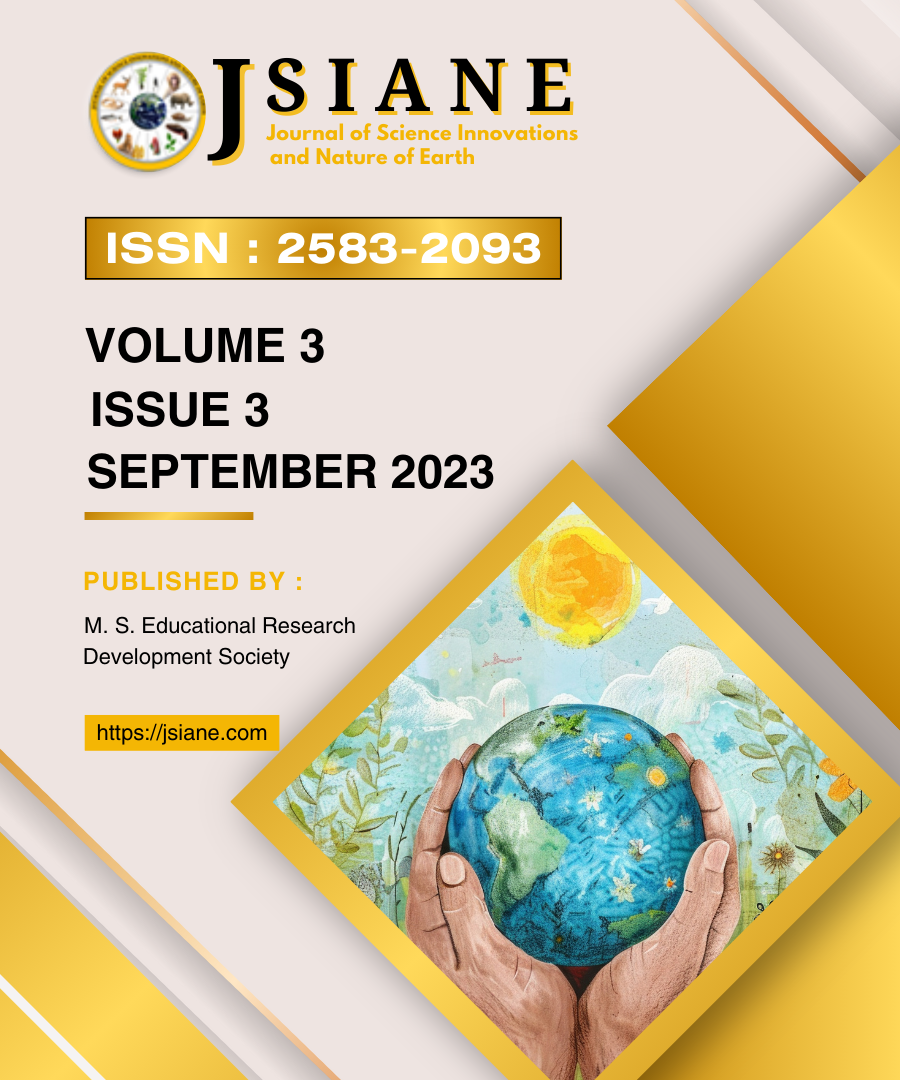INDUCTION OF SYSTEMIC RESISTANCE BY BIOTIC AND ABIOTIC COMPOUNDS AGAINST ALTERNARIA BLIGHT OF CAULIFLOWER CAUSED BY ALTERNARIA BRASSICAE
DOI:
https://doi.org/10.59436/jsiane.com/archives3/3/99Keywords:
Alternaria brassicae, cauliflower, Alternaria blight, entry routes, pathogen.Abstract
Alternaria blight of cauliflower is initiated by Alternaria brassicae, is considered as one of the significant diseases caused in cauliflower crop cultivated in all the growing areas of the world. Alternaria blight disease severity in cauliflower occurs after initiation of curd formation and continues till seed pods are set. Several opportunities include improvement of resistant cultivars; crop rotation, biological control, chemical pesticides, and tillage are used to control this particular disease. By using chemical pesticide mostly diseases can be controlled. In present investigation the three abiotic (salicylic acid, oxalic acid, benzothiadiazole and two biotic compound Trichoderma harzianum, and T.viride lab formulations were used to control this disease. Treatments were evaluated for their ability to reduce illness and prevent the production of conidia, a hallmark of pathogen proliferation. However, the disease control was maximum in variety Doctor II and under post inoculation technique. The maximum disease control was observed with the treatment of bion (93.86%) followed by salicylic Aacid (90.93%) and oxalic acid (89.06%) @ 50 mg.L concentration. The biotic compound T. harziaznum (4g/Kg seeds) also showed effective disease control (87.2%) followed by T.viride (84.53%). Although, the disease initiation in variety SV40551AC was two days later and the infection index was lower in Doctor II due to its tolerance nature.
References
Abdel-Monaim, M.F., M.A. Abdel-Gaid and A.H. Armanious Hanna (2012). Impact of chemical inducers on vigor, yield, fruit quality and controlling root rot/wilt diseases of tomatoes in New Valley, Egypt. Scholarly J. Ag. Sci., 2(8):137-146.
Deep, S. & Sharma, P. (2012). Host age as predisposing factor for incidence of black leaf spot of cauliflower caused by Alternaria brassicae and Alternaria brassicicola. India Phytopathologica, 65: 71-75.
Hossain, M. S. & Hossain, M. M. (2010). Effect of Alternaria blight on seed yield of cauliflower (Brassica oleracea L.). Bangladesh Journal of Agriculture Research, 35(3): 381-385.
Kumar, D. (2015). Studies on Systemic Acquired Resistance in cauliflower against Sclerotinia stalk rot. Journal of scientific &Technological research, 05(1): 69-73.
Kumar, D. (2015). Studies on the effect of Salicylic acid, harpin and phosphorus acid in control of late blight disease of potato. Journal of scientific &Technological research, 05 (2): 01-03.
Kumari, Y.S.M.A.I. and A. Vengadaramana (2017). Stimulation of Defense Enzymes in Tomato (Solanum lycopersicum L.) and Chilli (Capsicum annuum L.) in Response to Exogenous Application of Different Chemical Elicitors. Universal Journal of Plant Science, 5(1): 10-15.
Mahendranathan, C., N.K.B. Adikaram and T. Jayasingam (2016). Enhancement of natural disease resistance of Capsicum annuum L. against anthracnose disease through selected postharvest treatments. Proceedings of the 9th Australasian Soil-borne Symposium, Lincoln University, New Zealand. 14-17, November, 2016.
Prasannath, K. and D.M. De Costa (2015). Induction of peroxidase activity in tomato leaf tissues treated with two crop management systems across a temperature gradient. Proceedings of the International Conference on Dry Zone Agriculture 2015. Faculty of Agriculture, University of Jaffna, Sri Lanka. 15th & 16th October 2015, 34-35.
Prasannath, K., D.M. De Costa and K.S. Hemachandra (2014). Quantification of Peroxidase activity in Chilli tissues Grown under Two Crop Protection Systems across a Temperature Gradient. Proceedings of the HETC Symposium 2014. 7th & 8th July 2014, 102.
Downloads
Published
Issue
Section
License

This work is licensed under a Creative Commons Attribution-NonCommercial 4.0 International License.










